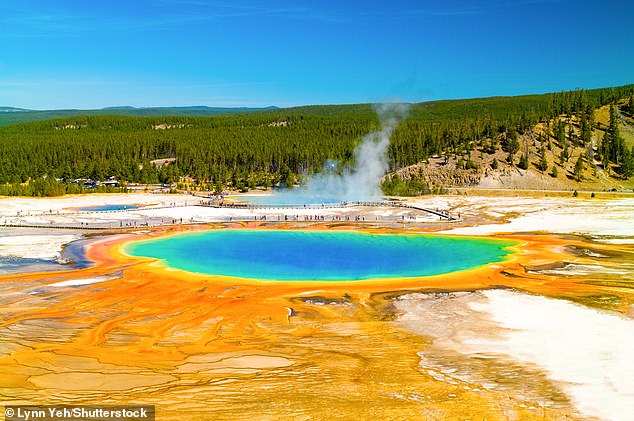
Earthquake Strikes Near U.S. Supervolcano, Reviving Fears of Overdue Eruption
Earthquake Near Yellowstone Supervolcano Sparks Eruption Concerns
By Chris Melore, Assistant Science Editor for DailyMail.com
Published: 15:09 BST, 23 May 2025 | Updated: 15:31 BST, 23 May 2025
A 3.6-magnitude earthquake struck southeastern Idaho near Soda Springs early Friday, reigniting fears about a potential eruption from the nearby Yellowstone supervolcano. The tremor occurred at 9:08 a.m. ET at a shallow depth of 10 miles, according to the U.S. Geological Survey (USGS). While shallow quakes are felt more intensely, they rarely cause significant damage.
[Image: A map showing Soda Springs, Idaho, and its proximity to Yellowstone Caldera.]
Soda Springs lies just 126 miles from Yellowstone’s caldera—a volcanic depression spanning 1,500 square miles beneath Wyoming, Montana, and Idaho. The region experiences 1,500–2,000 minor quakes annually due to magma shifts and tectonic activity along the Intermountain Seismic Belt. Most are below magnitude 2.0, but larger tremors, like Friday’s event, raise concerns about Yellowstone’s restless magma chamber.
Magma Chamber and Eruption Risks
Recent studies reveal Yellowstone’s magma reservoir sits only 2.3 miles below the surface, spanning 55 by 30 miles. This vast chamber fuels the park’s iconic geysers and hot springs but also poses a catastrophic threat. A full-scale eruption could unleash energy 100 times greater than the 1883 Krakatoa blast, with global climate impacts.
[Image: Diagram of Yellowstone’s magma chamber depth and structure.]
The supervolcano last erupted 640,000 years ago, leading some to speculate another event is overdue. However, USGS scientists caution that eruption intervals—ranging from 174,000 to 729,000 years—are too irregular to predict accurately. “There’s still about 100,000 years to go based on averages, but these estimates lack precision,” they noted.
Signs of Activity
In 2024, researchers discovered a new steam-spewing vent in Yellowstone’s Norris Geyser Basin, near a similar feature observed in 2003. These vents result from underground hydrothermal pressure and magma movements. Over 10,000 geothermal features dot the park, underscoring its volatile geology.
[Image: Steam rising from a newly discovered vent in Norris Geyser Basin.]
While earthquakes and vents don’t guarantee an imminent eruption, they remind us of Yellowstone’s latent power. For now, USGS maintains the volcano’s alert level at “normal,” urging preparedness over panic.
Key Facts About Yellowstone’s Supervolcano
- Last eruption: 640,000 years ago
- Magma chamber depth: 2.3–10 miles
- Annual earthquakes: 1,500–2,000
- Potential impact: Global cooling, crop failures, and regional destruction
[Image: Illustration comparing Yellowstone’s eruption potential to historic volcanic events.]
Though the recent quake caused no damage, it highlights the delicate balance between nature’s beauty and fury in one of Earth’s most geologically active regions.


